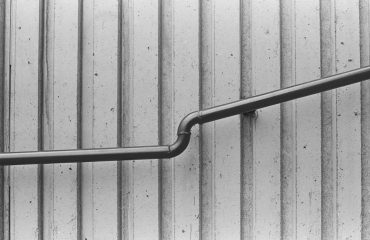EN 10217 is a crucial European standard defining the requirements for seamless steel pipes used in a wide range of applications. Understanding this standard is vital for engineers, procurement professionals, and anyone involved in selecting and using steel pipes. This comprehensive guide will delve into the intricacies of EN 10217, providing a clear and concise overview.
Understanding the EN 10217 Standard and its Scope
EN 10217, officially titled “Hot-finished seamless steel tubes for pressure purposes,” specifies the technical delivery conditions for hot-finished seamless steel tubes intended for pressure applications. It doesn’t cover all seamless steel tubes; for example, cold-drawn or cold-rolled seamless tubes are covered under different standards. The standard covers a broad spectrum of steel grades, each designed to meet specific strength, ductility, and other mechanical property requirements. The scope extends to various dimensions, wall thicknesses, and tolerances, ensuring suitability for diverse applications, from low-pressure water lines to high-pressure systems in power generation and petrochemical industries.
The standard is structured to provide detailed information on each grade of steel, including chemical composition, mechanical properties (tensile strength, yield strength, elongation), and testing procedures. This ensures consistent quality and reliability across different manufacturers and batches.
Key Grades within the EN 10217 Series: A Detailed Look
The EN 10217 standard encompasses numerous grades, each designated with a specific alphanumeric code. These grades are categorized based on their chemical composition and mechanical properties, leading to their suitability for specific applications. Some of the most common grades include:
- 1.0038: A low-carbon steel grade offering good weldability and formability, often used in low-pressure applications.
- 1.0044: A slightly higher strength grade compared to 1.0038, suitable for applications requiring enhanced mechanical properties.
- 1.0048: A higher-strength, low-alloy steel offering improved yield and tensile strength, commonly used in more demanding pressure applications.
- 1.0058: A high-strength, low-alloy steel grade with excellent mechanical properties, frequently used in high-pressure applications.
- 1.0068: Designed for high-pressure applications requiring exceptional strength and toughness. Often used in demanding environments.
Selecting the appropriate grade is crucial for ensuring the structural integrity and longevity of the piping system. The choice depends heavily on the operating pressure, temperature, and the nature of the fluid being conveyed.
Manufacturing Processes and Quality Control in EN 10217 Pipes
The manufacturing process for EN 10217 seamless steel pipes typically involves hot-finishing techniques. This involves heating a steel billet to a high temperature, then piercing and rolling it into a seamless tube. Subsequent processes such as heat treatment and straightening are employed to achieve the desired dimensions and mechanical properties. Strict quality control measures are implemented throughout the manufacturing process to ensure compliance with the standard’s specifications. This includes:
- Chemical composition analysis: Ensuring the steel meets the required chemical composition for the specified grade.
- Mechanical testing: Verifying that the pipe meets the specified tensile strength, yield strength, and elongation requirements.
- Dimensional inspection: Checking the pipe’s outer diameter, wall thickness, and straightness to ensure they are within the permitted tolerances.
- Non-destructive testing (NDT): Employing techniques like ultrasonic testing (UT) or eddy current testing (ECT) to detect internal flaws or defects.
These rigorous quality control procedures are essential for ensuring the safety and reliability of the pipes in service.
Applications of EN 10217 Seamless Steel Pipes: A Diverse Range
The versatility of EN 10217 seamless steel pipes makes them suitable for a wide range of applications across various industries. Their strength, durability, and resistance to pressure make them ideal for:
- Oil and gas industry: Transporting crude oil, natural gas, and refined petroleum products.
- Power generation: Used in boiler feedwater systems, steam lines, and other high-pressure applications in power plants.
- Chemical processing: Handling various chemicals and corrosive fluids in chemical plants.
- Water and wastewater treatment: Transporting water and wastewater in pipelines.
- Construction and infrastructure: Used in structural applications, scaffolding, and other construction projects.
The specific grade of EN 10217 pipe selected for a particular application depends on the operating conditions, such as pressure, temperature, and the nature of the fluid being conveyed.
Ensuring Compliance and Selecting the Right EN 10217 Pipe
Compliance with EN 10217 is paramount for ensuring the safety and reliability of piping systems. When selecting EN 10217 pipes, it is crucial to verify that the pipes meet all the requirements specified in the standard. This involves checking the manufacturer’s documentation, including mill certificates and test reports, to confirm that the pipes have undergone the necessary quality control procedures and meet the specified grade and dimensions. Careful consideration of the application’s specific demands, including pressure, temperature, and corrosive environment, is essential to select the appropriate grade of steel.
Furthermore, consulting with experienced engineers and material specialists can ensure the correct selection and application of EN 10217 pipes, contributing to the safety and efficiency of the overall system.
This comprehensive guide provides a foundational understanding of EN 10217 seamless steel pipes. By understanding the different grades, applications, and quality control measures, engineers and professionals can confidently select and utilize these crucial components in various industries.
SEO-Friendly Tags:
- EN 10217
- Seamless Steel Pipes
- Pressure Pipes
- Steel Pipe Grades
- European Steel Pipe Standard




